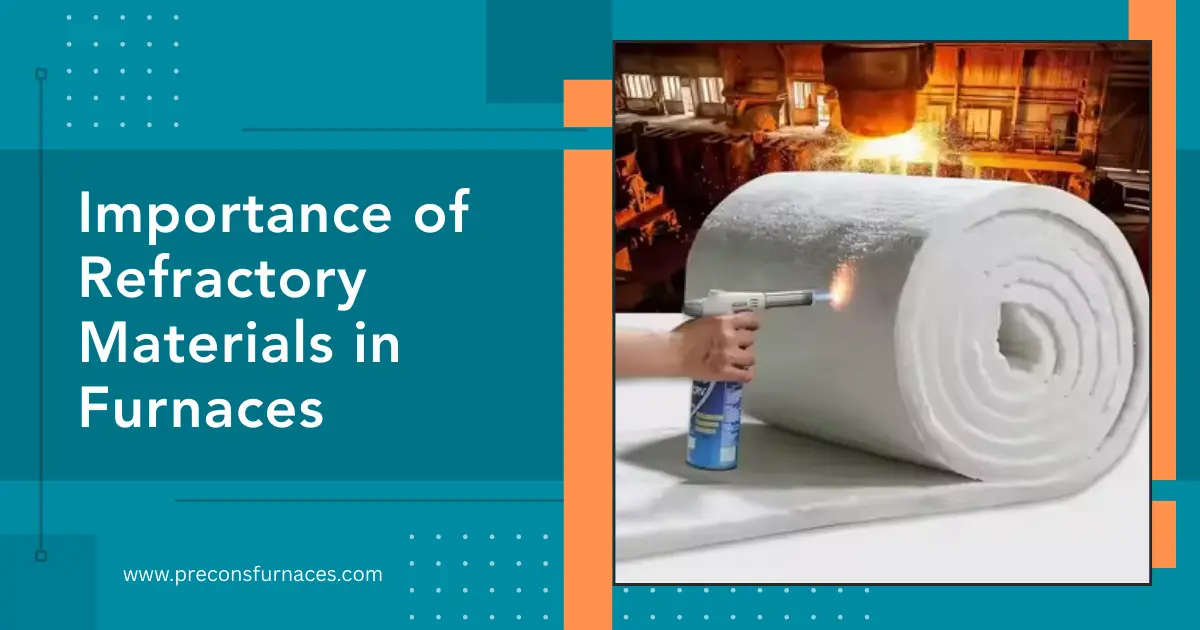
Industrial furnaces represent multi-million dollar investments that manufacturers expect to operate reliably for decades. Yet, many facilities experience premature furnace failures, costly repairs, and unexpected downtime—often traced back to a single critical component: refractory materials.
The difference between a furnace lasting 10 years versus 25 years frequently comes down to refractory quality. But what exactly makes modern refractory materials so superior, and how do they deliver such dramatic improvements in furnace longevity?
The Science Behind Refractory Performance
Advanced refractory materials represent a quantum leap from traditional firebricks and basic insulation. These engineered ceramics and composites are designed at the molecular level to withstand the extreme conditions inside industrial furnaces while maintaining structural integrity over extended periods.
Modern refractories excel in three critical areas:
- Thermal shock resistance – withstanding rapid temperature changes without cracking
- Chemical compatibility – resisting corrosion from furnace atmospheres and processed materials
- Thermal stability – maintaining properties across thousands of heating cycles
Key Longevity Factors in Advanced Refractories
Superior Thermal Shock Resistance
Traditional refractories often fail during startup and shutdown cycles due to temperature changes that create mechanical stress. Advanced materials incorporate microstructural design features that accommodate thermal expansion and contraction without developing cracks.
Real-World Impact: Furnaces equipped with premium refractories can handle 3-5x more thermal cycles before showing signs of deterioration.
Enhanced Chemical Durability
Industrial processes expose refractories to aggressive chemical environments—from reducing atmospheres in steel treatment to oxidizing conditions in ceramic firing. Advanced materials feature:
- Engineered grain boundaries that resist chemical penetration
- Protective surface treatments that prevent corrosion initiation
- Specialized compositions tailored for specific atmospheric conditions
Optimized Thermal Conductivity
The best refractory systems strike a balance between heat retention and controlled heat transfer. Too much insulation creates temperature gradients that cause stress, while too little insulation wastes energy and reduces efficiency.
Strategic Design: Multi-layer refractory systems utilize various materials to optimize thermal performance throughout the furnace structure.
Economic Impact of Premium Refractory Investment
Extended Service Life
- Standard refractories: 8-12 years typical service life
- Advanced materials: 20-30 years with proper maintenance
- Payback period: Usually 3-5 years through reduced replacement costs
Reduced Maintenance Costs
Preventive refractory replacement eliminates emergency repairs that can cost five to ten times more than planned maintenance. Advanced materials provide predictable wear patterns, allowing for scheduled maintenance windows.
Energy Efficiency Gains
Superior insulation properties reduce energy consumption by 15-25% compared to conventional refractories. For energy-intensive operations, this translates to substantial annual savings.
Application-Specific Refractory Solutions
Different furnace applications demand specialized refractory formulations:
High-Temperature Applications (>2000°F):
- Alumina-based ceramics for extreme temperature stability
- Silicon carbide composites for thermal shock resistance
Controlled Atmosphere Furnaces:
- Chrome-free alternatives for environmental compliance
- Specialized coatings for atmosphere protection
Rapid Cycling Operations:
- Low thermal mass designs for quick heating/cooling
- Fibre-based systems for thermal shock immunity
The Installation Factor
Even the best refractory materials can fail prematurely due to improper installation and handling. Critical success factors include:
- Proper curing procedures to develop full strength
- Correct joint design to accommodate thermal movement
- Quality control testing to verify installation integrity
Maximizing Refractory ROI
Smart refractory investment requires understanding your specific operating conditions, maintenance capabilities, and long-term production goals. Working with experienced furnace manufacturers ensures refractory selection aligns with your application requirements and delivers maximum service life.
The key lies in a comprehensive system design that considers not just the refractory materials themselves, but how they integrate with heating elements, atmosphere systems, and mechanical components to create a cohesive, long-lasting furnace system.
Looking to maximize your furnace investment through advanced refractory technology? Precons Furnaces engineers custom refractory solutions that have delivered service lives of 20+ years in the most demanding aerospace, nuclear, and industrial applications. Our materials expertise ensures optimal performance for your specific operating conditions.
Tired of frequent refractory repairs disrupting your production schedule? Book Your Refractory Consultation – Our materials engineers will evaluate your current setup and recommend advanced refractory solutions that could double your furnace service life while reducing operating costs.